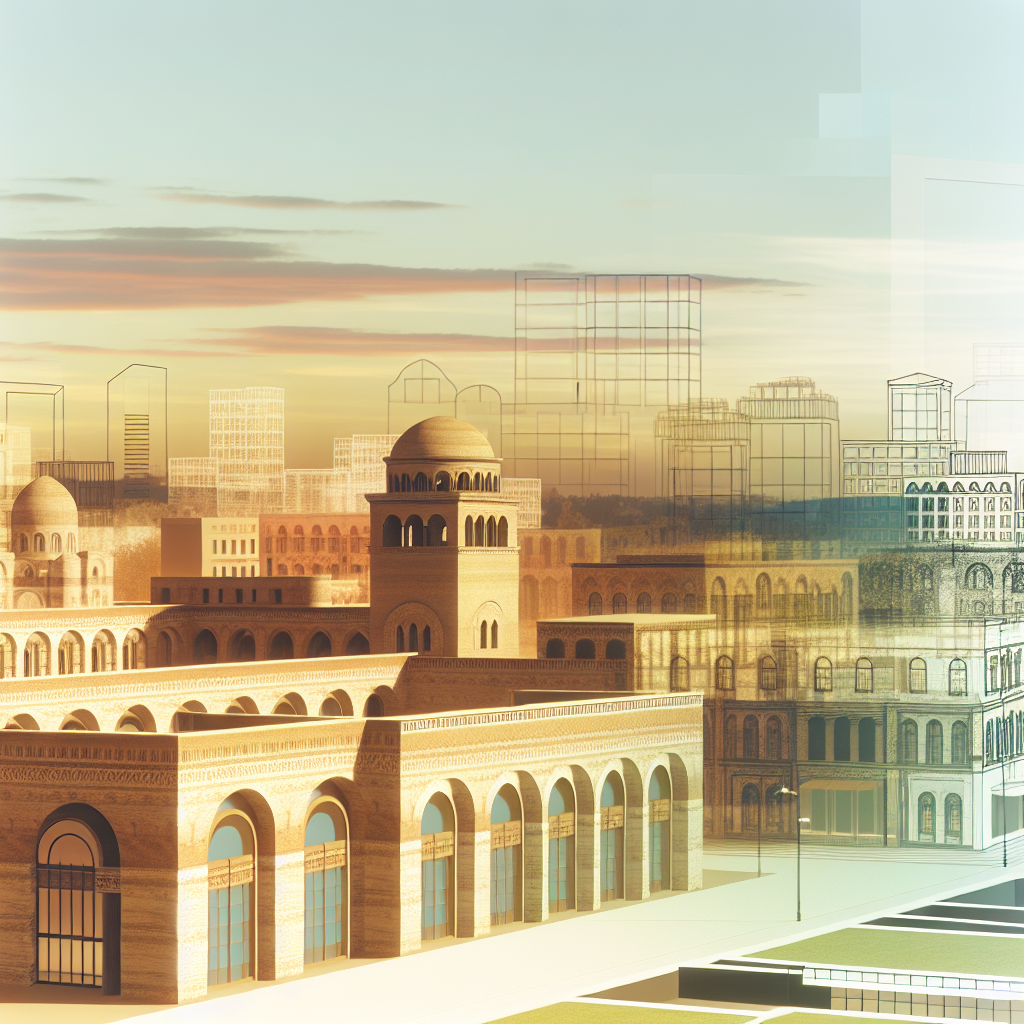
Roman architecture is renowned for its grandeur, innovation, and lasting impact. From the Colosseum to the Pantheon, the Romans left an indelible mark on the architectural world. Even today, their architectural principles and design elements continue to inspire and influence modern architects. In this article, we will explore the influence of Roman architecture in the modern era, examining how it has shaped contemporary buildings and urban landscapes.
The Enduring Legacy of Roman Architecture
Roman architecture emerged during the Roman Republic and reached its peak during the Roman Empire. The Romans were pioneers in engineering and construction, developing techniques and materials that were revolutionary for their time. Their architectural achievements were not only impressive in terms of scale and aesthetics but also in terms of functionality and durability.
One of the most iconic examples of Roman architecture is the Colosseum, a massive amphitheater that could hold up to 50,000 spectators. Its innovative design, featuring a complex system of arches and vaults, allowed for efficient crowd control and facilitated the movement of people within the structure. This architectural feat has influenced the design of modern stadiums and arenas, which often incorporate similar principles to optimize space and enhance the spectator experience.
Incorporating Roman Elements in Modern Buildings
Many modern buildings draw inspiration from Roman architecture, incorporating elements such as arches, columns, and domes. These design features not only pay homage to the past but also serve practical purposes in contemporary construction.
Arches
The Romans were masters of arch construction, using it extensively in their buildings. Arches distribute weight evenly, allowing for larger openings and greater structural stability. This architectural technique is still widely used today, particularly in bridges and tunnels. For example, the Sydney Harbour Bridge in Australia, completed in 1932, features a massive steel arch that spans the harbor, inspired by the Roman arches.
Columns
Columns were a defining feature of Roman architecture, serving both structural and decorative purposes. The three main types of columns used by the Romans were Doric, Ionic, and Corinthian. These column orders have been replicated in countless buildings throughout history, including the United States Capitol in Washington, D.C., which features Corinthian columns in its iconic neoclassical design.
Domes
The Romans were the first to popularize the use of domes in architecture. The Pantheon, a Roman temple dedicated to all the gods, showcases the grandeur and engineering prowess of Roman domes. Its design has influenced numerous domed structures, such as the United States Capitol dome and the dome of St. Peter’s Basilica in Vatican City.
Urban Planning and Infrastructure
Aside from individual buildings, Roman architecture also had a profound impact on urban planning and infrastructure. The Romans were known for their well-designed cities, featuring straight roads, public squares, and efficient sewage systems.
One of the most famous examples of Roman urban planning is the city of Pompeii, which was preserved by the eruption of Mount Vesuvius in 79 AD. Pompeii’s grid-like layout, with intersecting streets and organized blocks, served as a model for future city planning. Today, many cities around the world, such as New York City and Barcelona, have adopted similar grid systems to optimize transportation and urban development.
Furthermore, the Romans were pioneers in constructing aqueducts, which allowed for the efficient transport of water over long distances. These engineering marvels ensured a reliable water supply for cities and facilitated the development of urban centers. The influence of Roman aqueducts can be seen in modern water supply systems, which still rely on similar principles of gravity and hydraulic engineering.
Case Study: The Jefferson Memorial
The Jefferson Memorial in Washington, D.C. is a prime example of how Roman architecture has influenced modern buildings. Completed in 1943, the memorial was designed by John Russell Pope, who drew inspiration from the Pantheon in Rome.
The Jefferson Memorial features a circular colonnade with Doric columns, reminiscent of the Pantheon’s design. The dome, although smaller in scale, echoes the grandeur of Roman domes. This architectural homage to Roman design not only pays tribute to the classical past but also creates a sense of timelessness and permanence.
The Influence of Roman Architecture in Popular Culture
Beyond the realm of architecture, Roman design elements have permeated popular culture, influencing art, fashion, and entertainment. The enduring appeal of Roman architecture can be seen in movies, such as “Gladiator” and “Ben-Hur,” which recreate the grandeur of ancient Rome on the silver screen.
In the world of fashion, designers often incorporate Roman-inspired elements into their collections. From draped togas to gladiator sandals, these fashion trends pay homage to the classical aesthetic and evoke a sense of timeless elegance.
Conclusion
The influence of Roman architecture in the modern era is undeniable. From the widespread use of arches and columns to the incorporation of Roman design elements in contemporary buildings, Roman architecture continues to shape the world we live in. Its enduring legacy can be seen in the grand stadiums, iconic government buildings, and well-planned cities that draw inspiration from the Romans. By understanding and appreciating the principles and innovations of Roman architecture, we can continue to create buildings and urban landscapes that stand the test of time.








